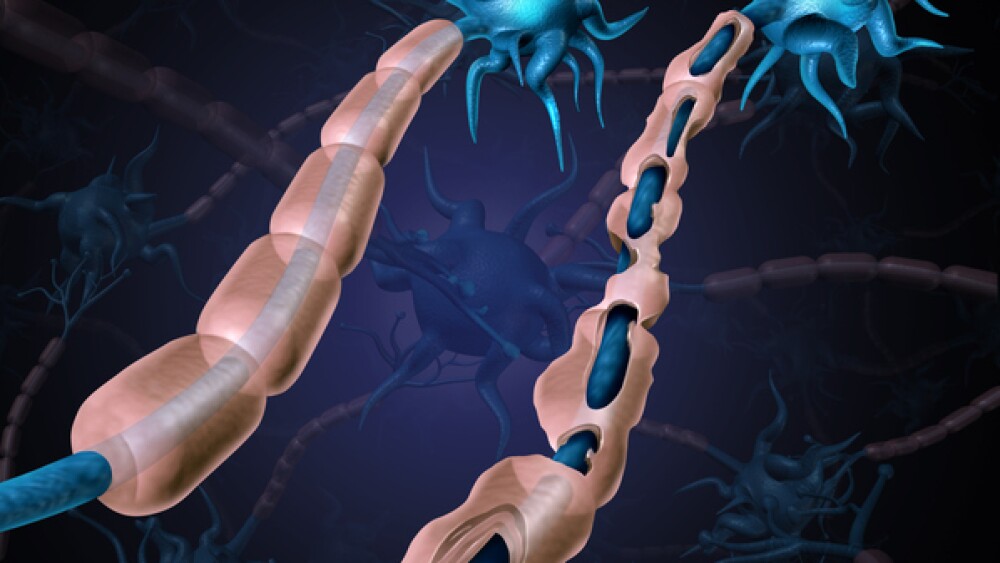MADISON, WI--(Marketwire - October 27, 2010) - TomoTherapy Incorporated (NASDAQ: TOMO), maker of advanced radiation therapy solutions for cancer care, announced today that its Co-Founder and Chairman Thomas Rockwell "Rock" Mackie, PhD, will discuss the growing clinical evidence that shows the benefits of the TomoTherapy® radiation therapy system at a presentation during the 52nd ASTRO Annual Meeting, October 31-November 4, 2010, in San Diego. More than 1,500 peer-reviewed abstracts and papers supporting the use of TomoTherapy technology have been published to date, with a record 76 abstracts alone to be featured at the ASTRO meeting this year. These abstracts highlight how the TomoTherapy platform has matured since its introduction in 2003 and is now widely used to deliver highly conformal radiation therapy treatment with speed and precision for a variety of common and complex tumors, while setting the stage for future advancements in cancer care.
"TomoTherapy customers around the world are achieving encouraging results -- from the accuracy of radiation delivery and minimization of side effects to improved local control and palliative care -- as evidenced in the published abstracts about our sophisticated radiation treatment system," said Mackie. "The abstracts being presented at ASTRO next week underscore the advantages of using the TomoTherapy system to treat breast, lung, prostate and head and neck cancers, and explore new ways the platform can be used to improve and speed development of treatment plans for advanced radiation delivery."
Breast Cancer
Three ASTRO abstracts are focused on the use of the TomoTherapy system to treat breast cancer. Comparing helical TomoTherapy to 3D conformal radiation therapy (3D-CRT), researchers in France and Canada found that TomoTherapy delivery maintained good target coverage while reducing doses to the ipsilateral lung and heart. Similarly, researchers in Wisconsin investigated accelerated external beam partial breast irradiation (EB-PBI) in the prone position with TomoTherapy technology, finding that the treatment yielded good conformality, provided favorable dose distributions with improved sparing to organs at risk, and allowed for reproducible targeting with its unique, daily CT-guided positioning. A third study, also done in Canada, found fewer acute skin toxicities in breast cancer patients treated with TomoTherapy technology, compared to those treated with 3D-CRT.
Lung Cancer
ASTRO abstracts examining lung cancer include TomoTherapy treatments for patients with early to late stages of the disease, as well as metastases. Researchers in Michigan sought to evaluate the TomoTherapy platform for delivery of stereotactic body radiotherapy (SBRT) in treating lung cancer in 40 patients. The results of this study showed that patients receiving SBRT via the TomoTherapy platform demonstrated a 90 percent local control rate, with low pulmonary toxicity, at a median 29 month follow-up. In a separate Michigan study, researchers compared Rapid Arc®, intensity-modulated radiation therapy (IMRT) and helical TomoTherapy for SBRT lung treatments, finding that TomoTherapy technology "performed better dosimetrically" and that the low dose spillage was improved with TomoTherapy, "which may reduce chest wall toxicity and incidence of symptomatic radiation-induced pneumonitis."
Wisconsin researchers are presenting interim results on an ongoing Phase I study of using the TomoTherapy system for dose escalation and hypofractionation on patients with advanced non-small cell lung cancer. Early results show that these patients have experienced no Grade 3 toxicities and have an estimated overall two-year survival rate of 44 percent.
For patients with metastases in the lung, Korean researchers detailed their treatment of 21 patients who have an average of five pulmonary metastases from hepatocellular carcinoma. In this study, researchers report that patients experienced no Grade 4 toxicity, and they saw promising progression-free survival in patients with five or fewer metastases who have had previous chemotherapy, as well as good response three months after TomoTherapy treatment.
In another Michigan study, researchers compared TomoTherapy and conventional treatment for whole lung irradiation in pediatric patients with metastases from Wilms' tumors, Ewings sarcoma and rhabdomyosarcoma. Results showed reduced doses to the heart, thyroid and breast tissue using TomoTherapy technology -- potentially minimizing late toxicities, including secondary cancers -- without compromising the planning target volume.
Prostate Cancer
Research featured at the ASTRO Annual Meeting also examines use of the TomoTherapy system to treat early and late-stage prostate cancers, as well as methods for better positioning of patients. In Italy, a study was conducted on hypofractionated TomoTherapy treatment with simultaneous integrated boost in 40 patients who had relapsed prostate cancer with nodal involvement. Results showed that TomoTherapy treatments offered a good rate of local control and "could be a valid alternative to chemotherapy." In another study at this Italian hospital, researchers examined the acute toxicity profile for whole pelvic irradiation with simultaneous integrated boost in 153 patients, which resulted in no Grade 3 toxicities and an extremely low incidence of Grade 2 toxicities. Researchers there also published a study on localized prostate cancer with high dose, moderately hypofractionated TomoTherapy treatments, which are showing promising biochemical control results three years after treatment.
In a Phase II trial in Canada, researchers examined hypofractionated TomoTherapy treatments combined with Androgen suppression in 60 patients with high-risk prostate cancer. At a median follow-up at 42 months, they noted that patients showed excellent overall and progression-free survival, with late toxicity peaking at 12 months and decreasing thereafter.
A number of studies looked at use of the use of the TomoTherapy system's mega-voltage CT (MVCT) imaging to plan, treat and position prostate cancer patients. In Alabama, researchers used MVCT imaging to determine the appropriate margins needed to treat prostate cancer with elective pelvic lymphatic irradiation, ensuring adequate coverage of the target and minimizing exposure of normal tissue. In Japan, researchers looked at how MVCT could be used to confirm position of the prostate for radiation therapy using calcifications within the prostate itself, rather than implanted markers. Their study showed that calcifications were found in 61 percent of patients and they could be successfully visualized with MVCT, and thus used as a landmark in positioning for radiation therapy treatments in 58 percent of patients, reducing the need for an additional invasive procedure.
Head and Neck Cancers
Three abstracts being presented at ASTRO stand out in terms of using TomoTherapy technology to treat head and neck cancers. In a Chinese study, researchers evaluated the early outcomes on 73 patients with nasopharynx cancer, of which more than half had advanced disease. This study showed that TomoTherapy treatment demonstrated clinical advantages over conventional radiation delivery methods. Almost 92 percent of the patients showed a complete response and generally there were low toxicities with no Grade 3 late xerostomia. Similarly, research in France demonstrated how TomoTherapy technology can be used to spare the parotid glands during head and neck treatment, without compromising tumor control. In this study, the researchers found no late xerostomia higher than Grade 1, which occurred in 58 percent of patients with a mean dose limit of 26 Gy to the parotids.
Also in France, research was done to compare TomoTherapy delivery with static IMRT and Rapid Arc® in the treatment of 10 head and neck cancer patients. This study concluded that TomoTherapy delivery was superior to other techniques, in terms of tumor coverage and dose homogeneity, while also being "statistically superior to the two other techniques in terms of" normal tissue complication probability (NTCP).
Users also are applying TomoTherapy's TomoDirect® fixed-angle delivery modality, which became available in 2009. Highlighted at ASTRO are two studies that examined the clinical use of the TomoDirect modality, reporting superior dosimetry, low beam-on times and convenience in radiation delivery for breast and craniospinal treatments when compared to conformal 3D methods.
Looking to the Future
Several studies featured at ASTRO also showcase how the TomoTherapy platform can be used in innovative ways in the future.
Two studies reported on technology* expected to speed TomoTherapy treatment planning times. The first study shows that significant acceleration in dose calculation times, with improved plan quality, can be attained with this method, while the second study details verification and validation of the dose calculation engine.
Researchers in Missouri and Virginia published three abstracts on the use of detector data for real-time dose verification*. In the Missouri study, focusing on head and neck cancer patients, researchers were able to detect inter- and intra-fraction errors successfully, while noting that their methods do not give additional dose to the patients solely for quality assurance purposes. Virginia researchers investigated a detector-based method for spinal SBRT and prostate cancer patients, indicating they achieved good, accurate results in both cases.
Five abstracts were published by research partners in Missouri and Germany about next-generation treatment delivery techniques* in development by TomoTherapy. In Missouri, researchers using the advanced delivery technique for cervical cancer patients were able to create comparable quality plans that can be delivered 60 percent faster than conventional TomoTherapy plans, and for esophageal cancer they were able to produce better quality plans that are 42 percent faster. The German study shows that the advanced delivery could potentially cut TomoTherapy SBRT treatment times in half. Another study from Germany examined how treatment times could be significantly reduced for large targets while maintaining superior plan quality.
Exhibiting at ASTRO
In Booth 3101 at ASTRO, TomoTherapy will be showcasing its new TomoHD™ treatment system. The world's first TomoHD system is currently being installed at University Radiotherapy Center of Antwerp, Belgium. TomoTherapy will also showcase it TomoMobile™ relocatable radiation therapy solution, as well as advanced shielding solutions. In addition, the company will host a number of speakers at its booth November 1-3, 2010, including Mackie's presentation "Clinical Evidence Supporting TomoTherapy Technology."
* These technologies are currently works-in-progress, and are not available for sale.
About TomoTherapy Incorporated
TomoTherapy Incorporated develops, markets and sells advanced radiation therapy solutions that can be used to treat a wide variety of cancers, from the most common to the most complex. The ring gantry-based TomoTherapy® platform combines integrated CT imaging with conformal radiation therapy to deliver sophisticated radiation treatments with speed and precision while reducing radiation exposure to surrounding healthy tissue. TomoTherapy's suite of solutions include its flagship Hi-Art® treatment system, which has been used to deliver more than three million CT-guided, helical intensity-modulated radiation therapy (IMRT) treatment fractions; the TomoHD™ treatment system, designed to enable cancer centers to treat a broader patient population with a single device; and the TomoMobile™ relocatable radiation therapy solution, designed to improve access and availability of state-of-the-art cancer care. TomoTherapy's stock is traded on the NASDAQ Global Select Market under the symbol TOMO. To learn more about TomoTherapy, please visit TomoTherapy.com.
Forward-Looking Statements
Statements in this release regarding future products or product capabilities, events, expectations and other similar matters, including but not limited to statements using the terms "expected," "could," "may," "should," "suggests," or "indicates" constitute forward-looking statements within the meaning of the Private Securities Litigation Reform Act of 1995. Such forward-looking statements contained in this press release are subject to risks and uncertainties that could cause actual results to differ materially from those anticipated, including but not limited to factors such as our ability to integrate acquired assets, ability to protect intellectual property, risks of interruption due to events beyond the company's control, and the other risks listed from time to time in TomoTherapy's filings with the U.S. Securities and Exchange Commission, which by this reference are incorporated herein. These forward-looking statements represent TomoTherapy's judgments as of the date of this press release. TomoTherapy assumes no obligation to update or revise the forward-looking statements in this release because of new information, future events or otherwise.
©2010 TomoTherapy Incorporated. All rights reserved. TomoTherapy, Tomo, Hi-Art, TomoHD, TomoHelical, TomoDirect, TQA, the TomoTherapy logo are among trademarks, service marks or registered trademarks of TomoTherapy Incorporated in the United States and other countries.
Investor Contact:
Thomas E. Powell
Chief Financial Officer
608.824.2800
Email Contact
Media Contacts:
Kevin O'Malley
Manager, Corporate Communications
608.824.3384
Email Contact
Susan Lehman
Rockpoint Public Relations
510.832.6006
Email Contact




